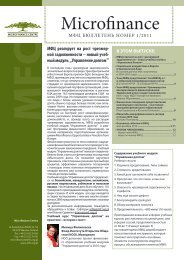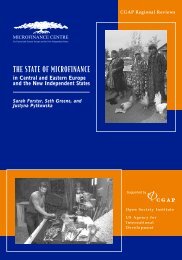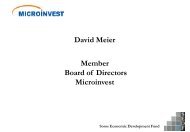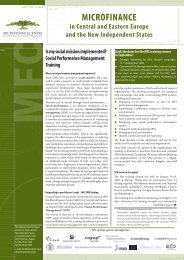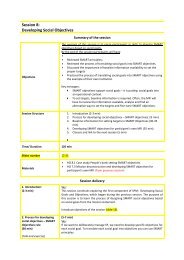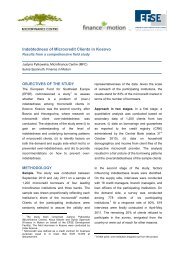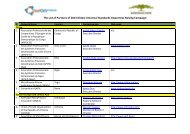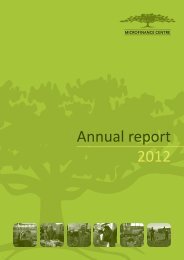Value Chains research report Tajikistan final - Microfinance Centre
Value Chains research report Tajikistan final - Microfinance Centre
Value Chains research report Tajikistan final - Microfinance Centre
Create successful ePaper yourself
Turn your PDF publications into a flip-book with our unique Google optimized e-Paper software.
are in 2 layers. One rail car can carry 30-40 tonnes of watermelons. According to<br />
railroad regulations for transportation of watermelons in refrigerator rail cars they should<br />
be on the boxes, 4 per box. A major difficulty in transporting watermelons is the high<br />
nitrates used by producers. The watermelons with high nitrate levels spoil quicker and<br />
do not reach the destination in an acceptable form.<br />
Table 28. Export of Watermelons and Melons in <strong>Tajikistan</strong>, 2006 and 2008 and 2010<br />
2006 2008 2010<br />
Country<br />
Tonnes US Tonnes US Tonnes US<br />
Dollars<br />
Dollars<br />
Dollars<br />
(000)<br />
(000)<br />
(000)<br />
Totally 990 146 507 121 354 37<br />
Kazakhstan 25 3 - -<br />
Russia 911 138 295 97 8 13<br />
Afghanistan 54 5 212 24 342 23<br />
Kyrgyzstan 4 1<br />
Source: State Statistic Agency of <strong>Tajikistan</strong>.<br />
As we can see from the table 28 for exports of melon and watermelons small, the main<br />
volume was exported to Afghanistan. The export of melons and watermelons to Russia<br />
declined rapidly. It is connected with high the competition in Russian market and<br />
problems with transportation. The railway connection from Southern <strong>Tajikistan</strong><br />
problematic due to problems with Uzbekistan as country transit which not allow the flow<br />
from this direction.<br />
Functions.<br />
• Farmers, procurers, exporters and retail sellers are the main players in the melon<br />
value chain, each linked to the other. The producer segment of the value chain<br />
is growing as more farmers realize the profit potential of watermelons and are<br />
shifting acreage to their production. The increase is also due to the breakup of<br />
larger farms and the reduction of restrictions on land devoted to cotton<br />
production, diverting irrigated land to melon production.<br />
• Exporters are entrepreneurs who have contacts in the exporting market. The<br />
number of exporters is stable however; exports is decreasing, largely due to the<br />
problems with Uzbekistan.<br />
• Retail traders are those who sell watermelons in districts and towns, trading in<br />
the markets and along the roads. Their number is growing.<br />
62




